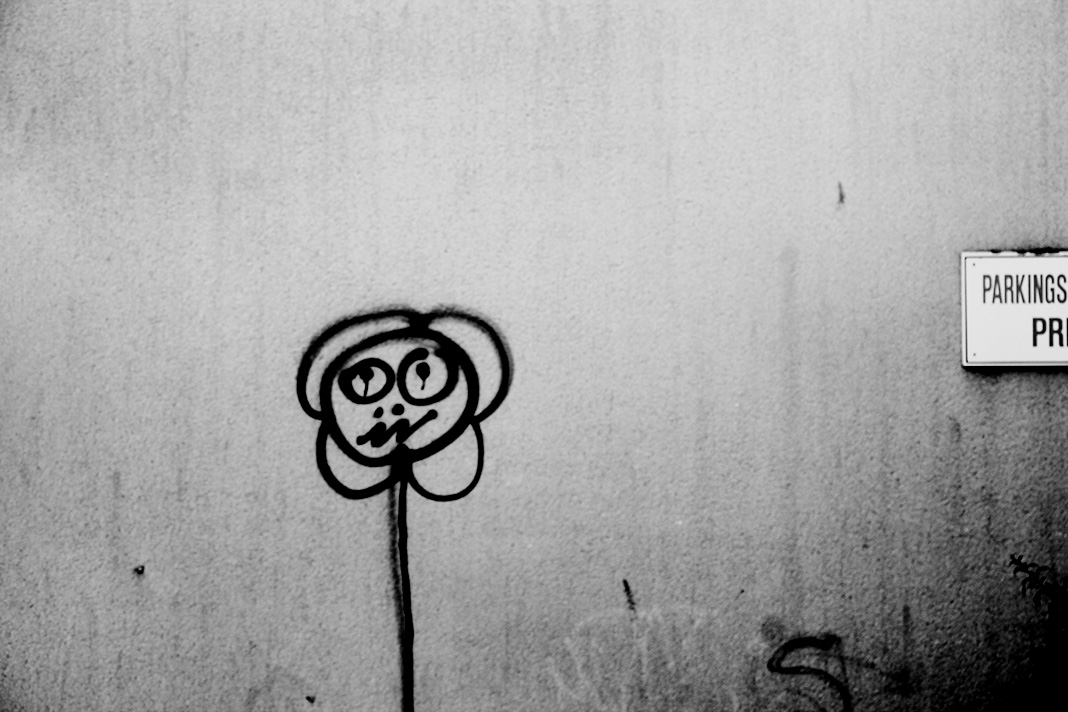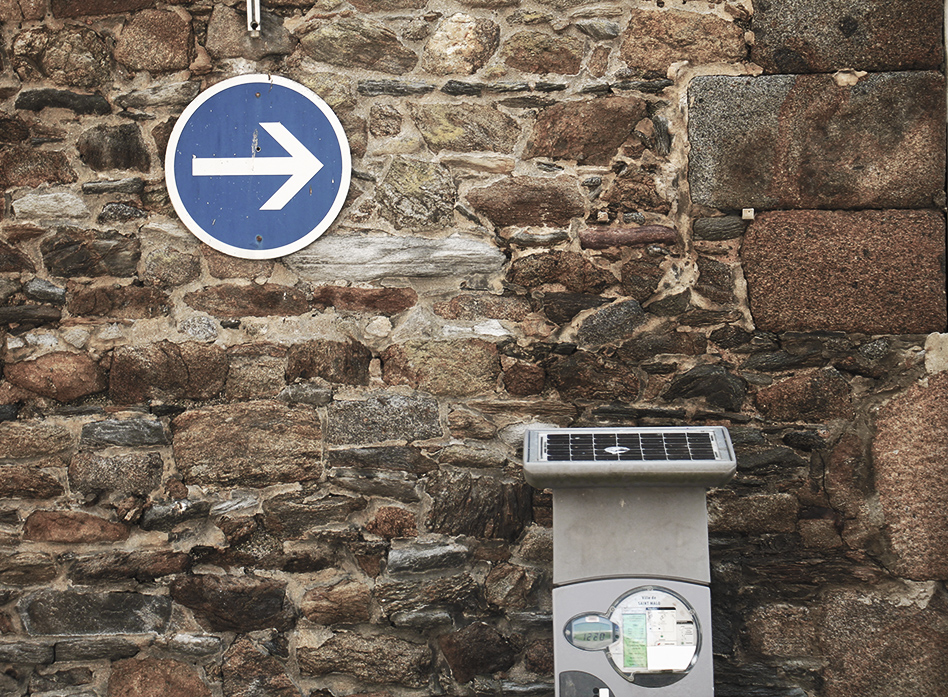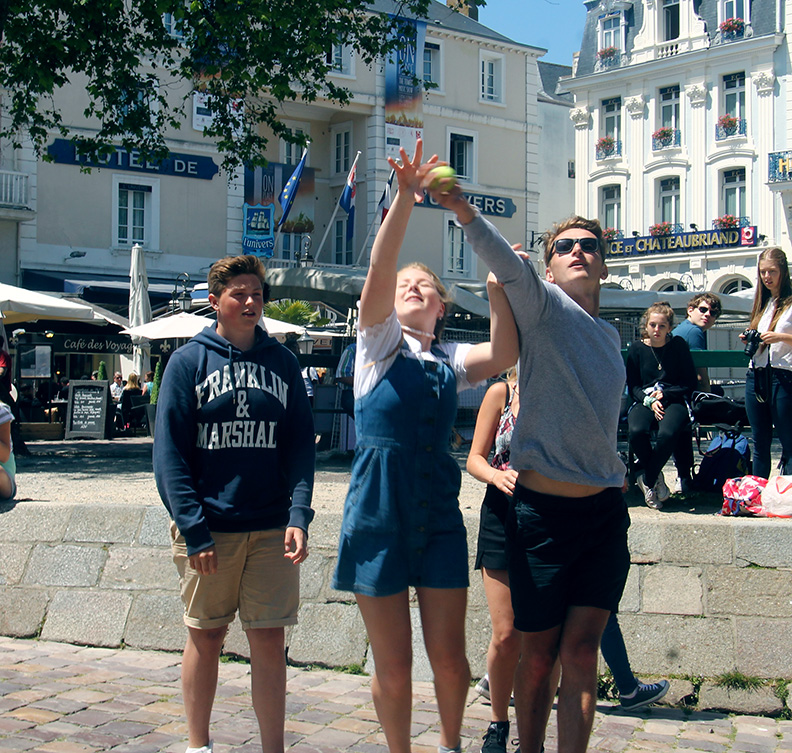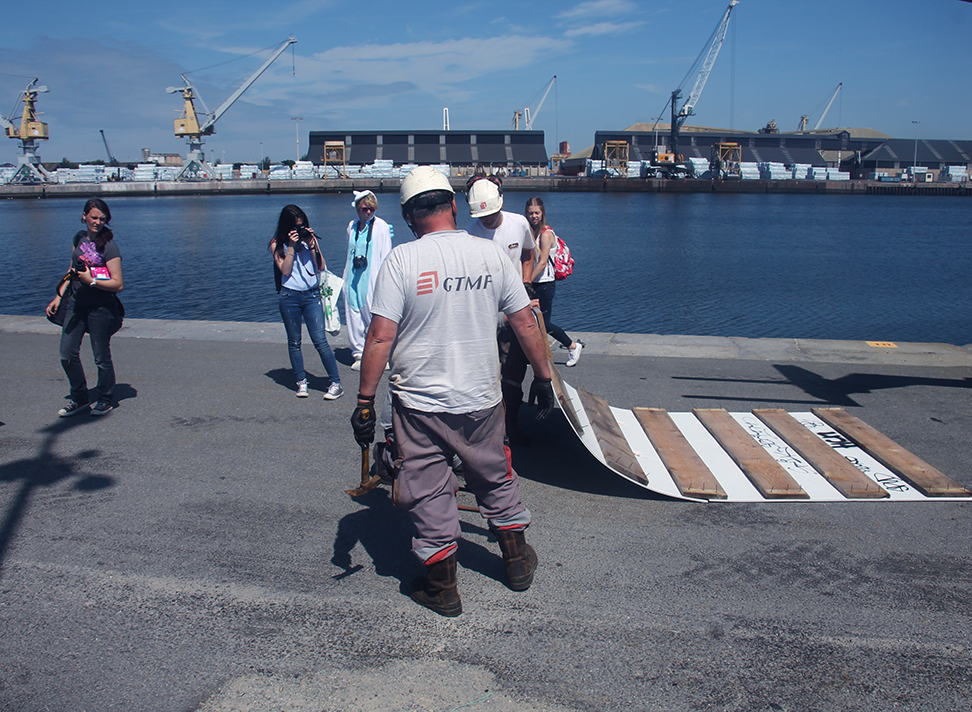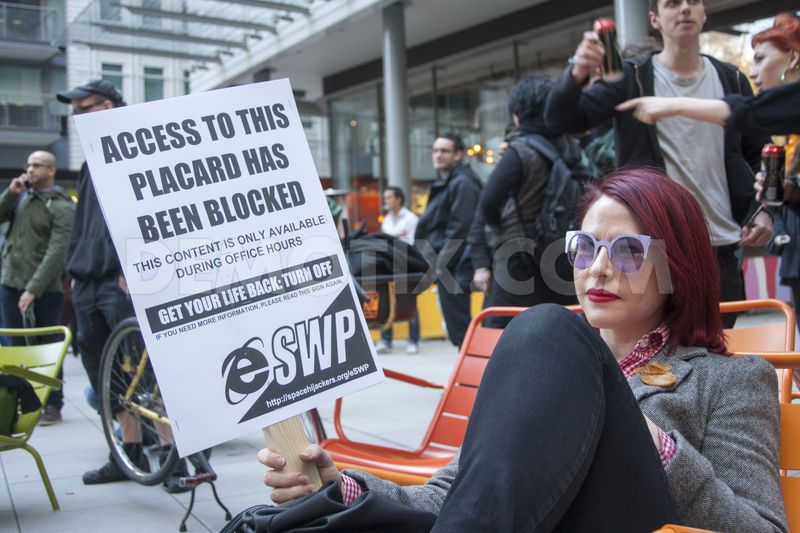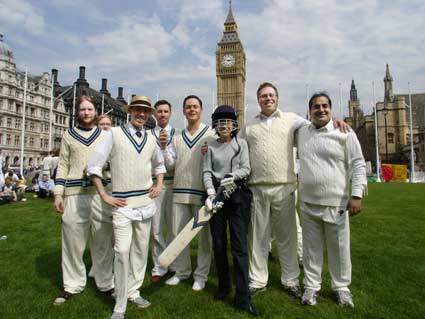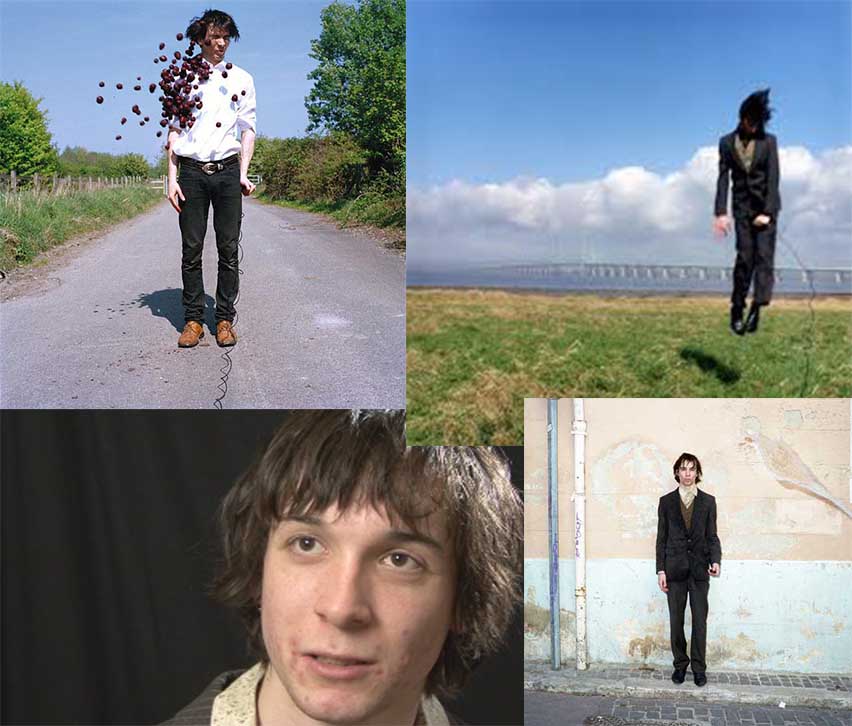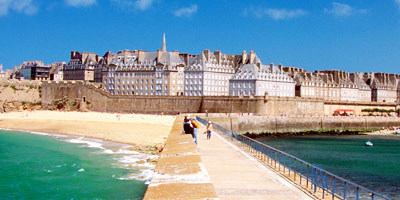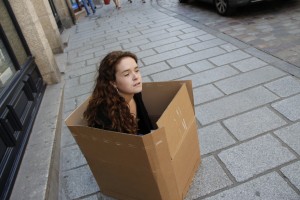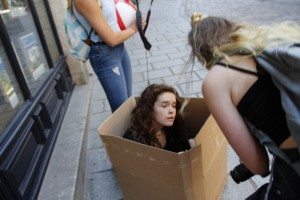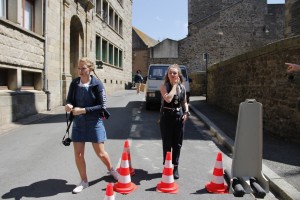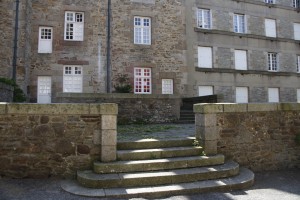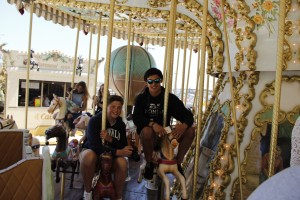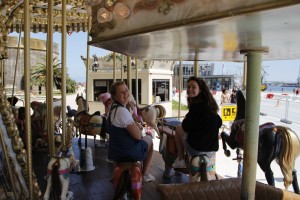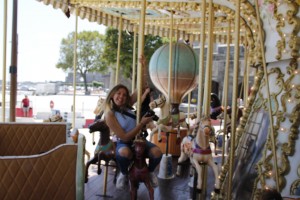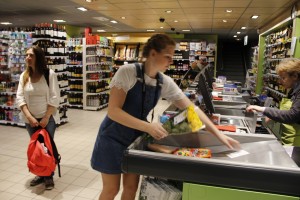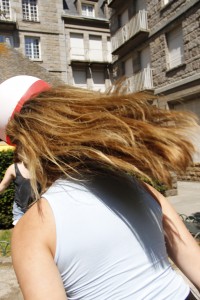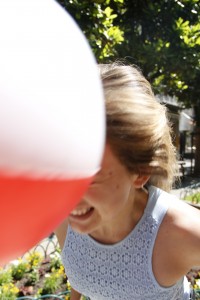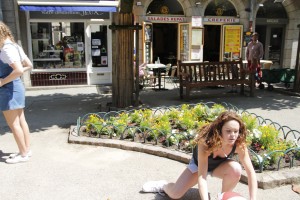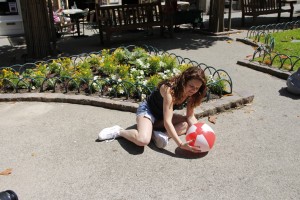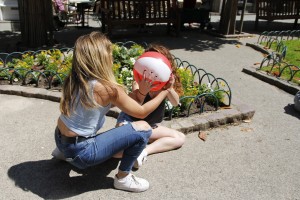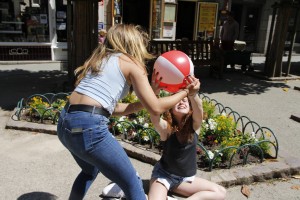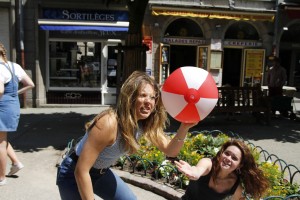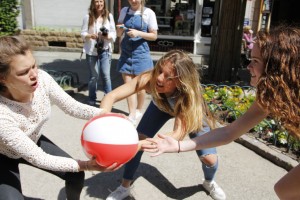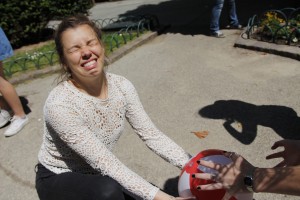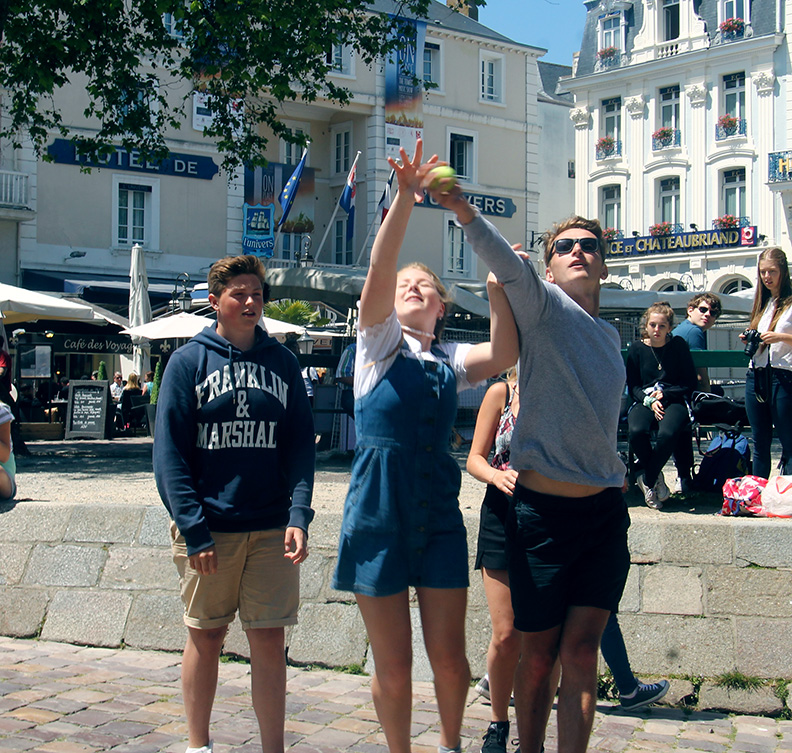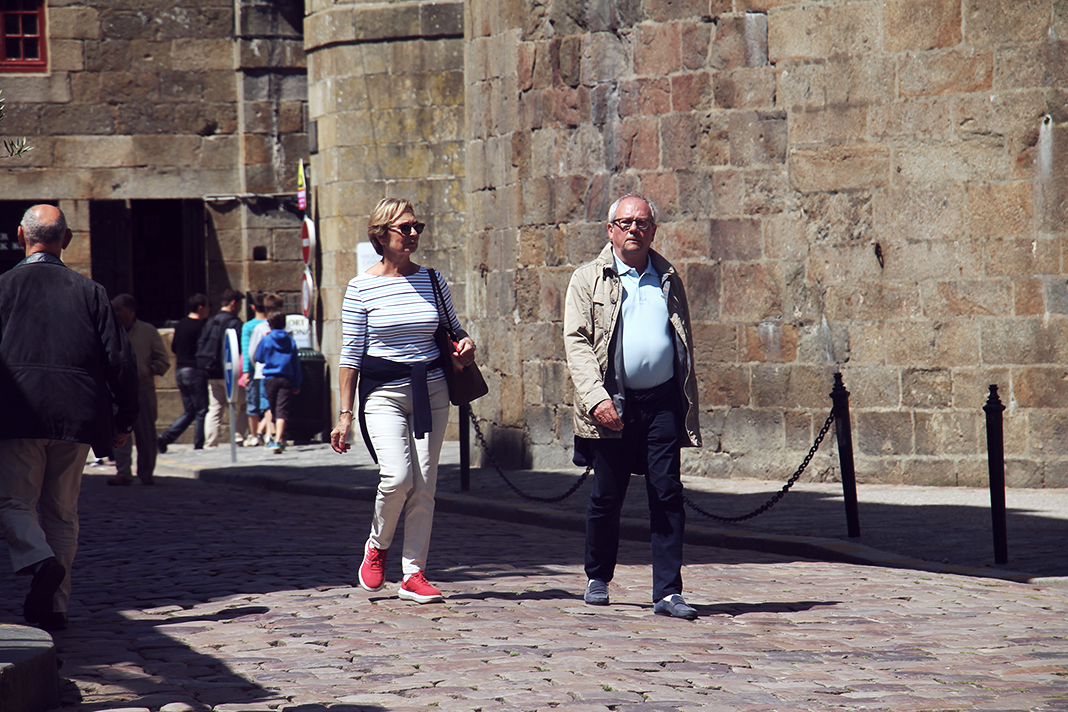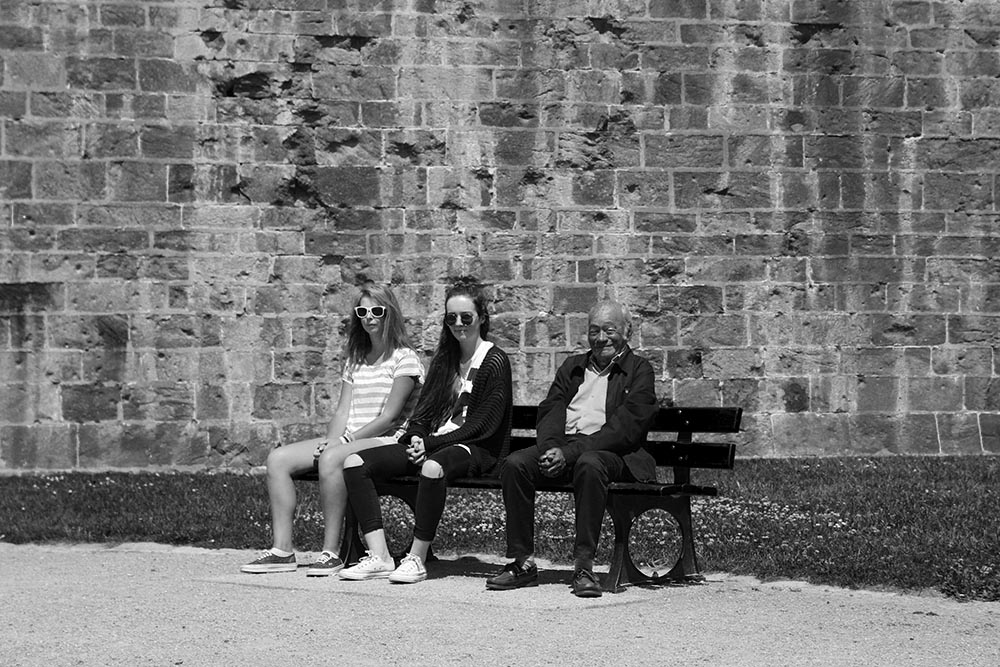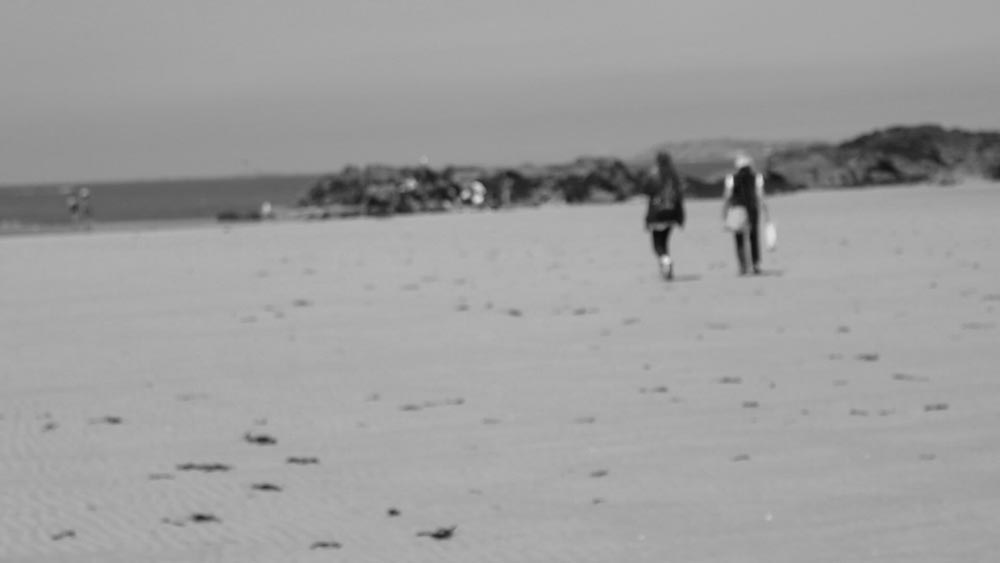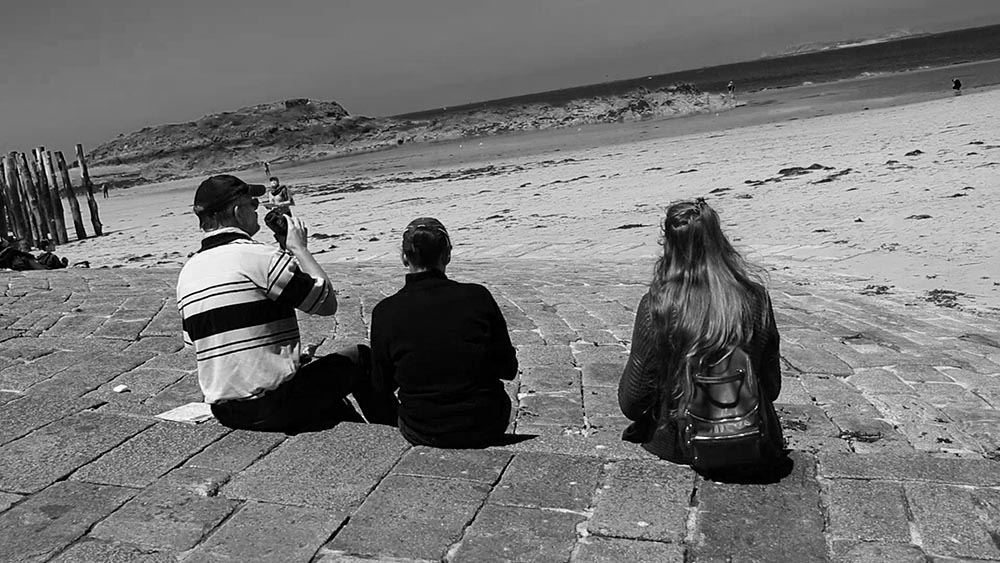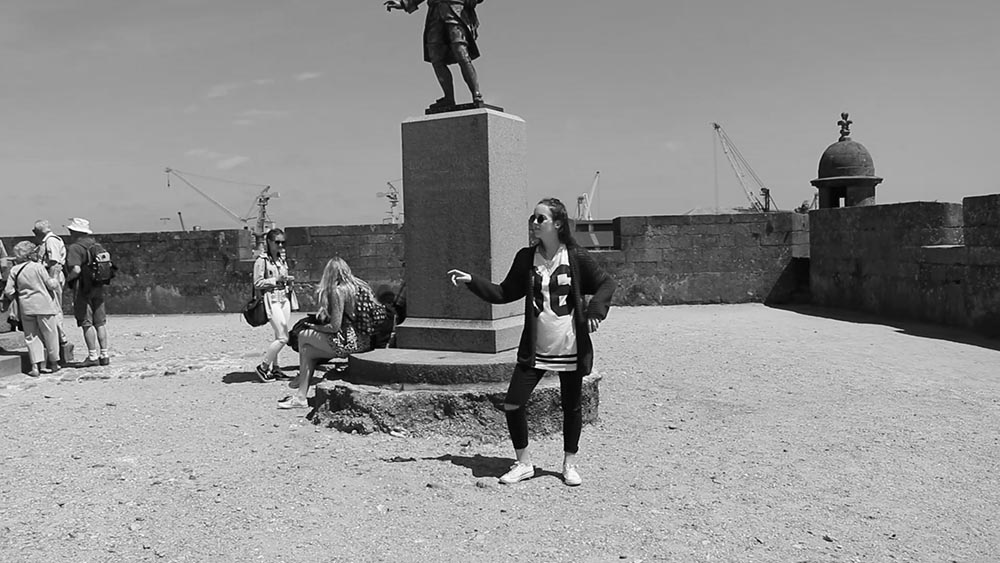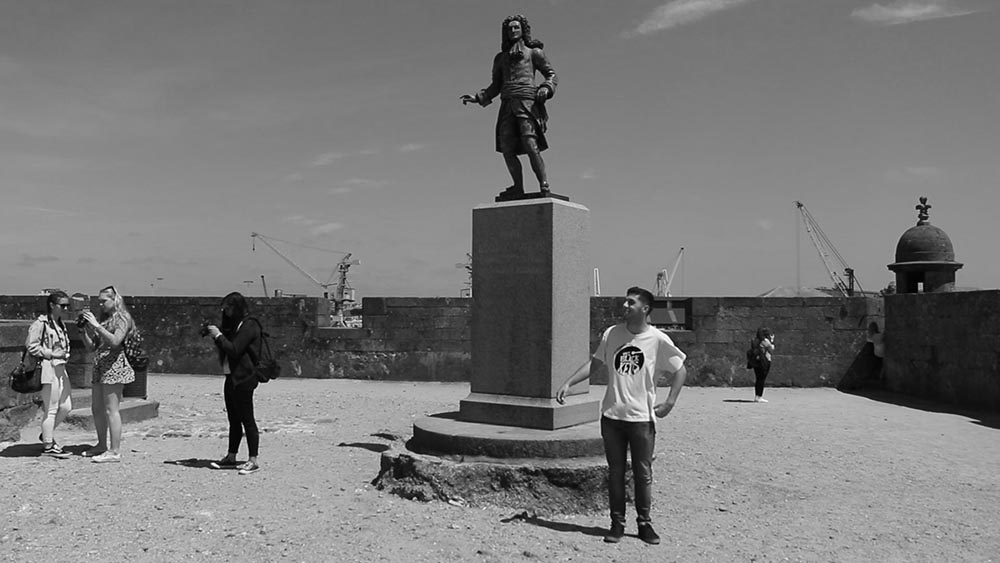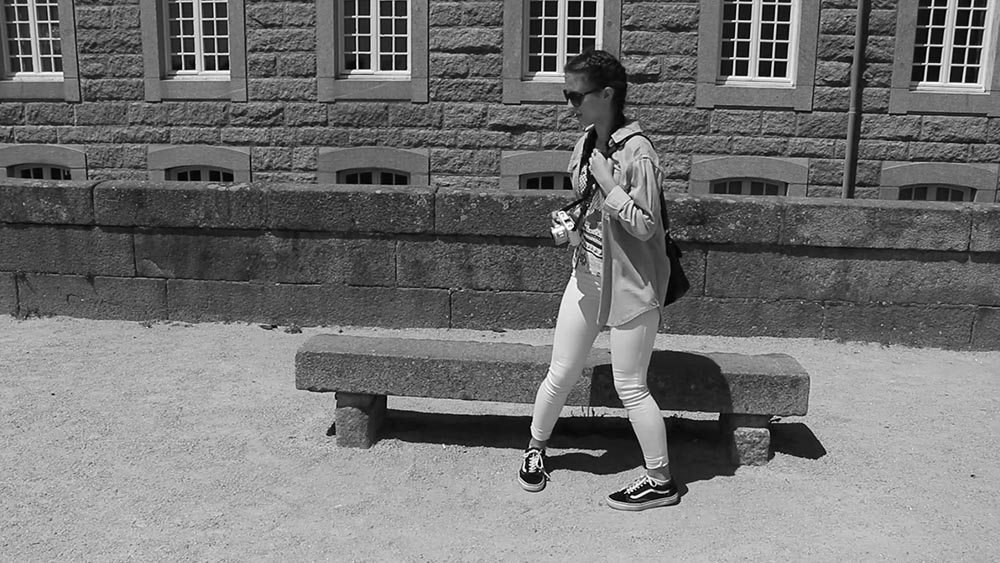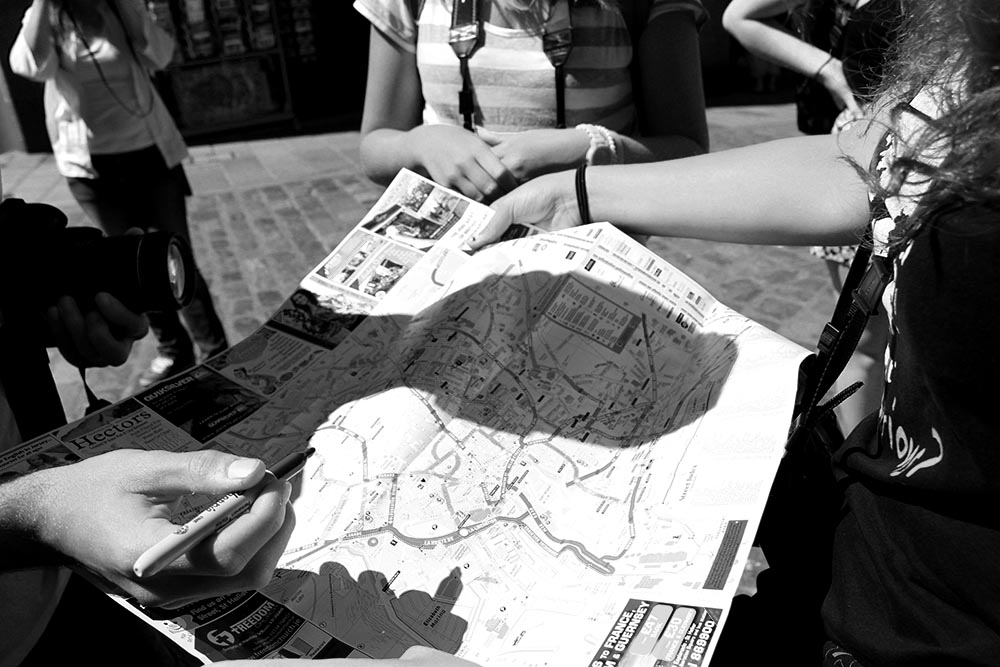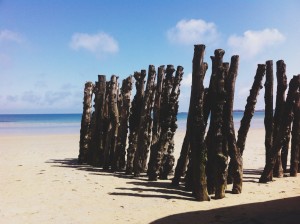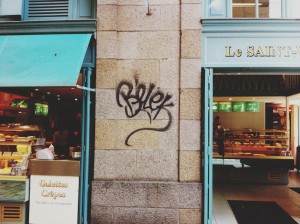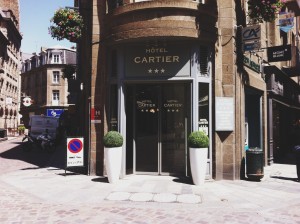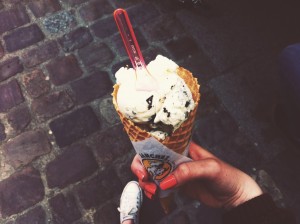Our recent trip to St Malo with Tom Pope and the Archilse team was an interesting and very enjoyable experience. We visted all over the town, practising the many concepts that we have learned over the last few weeks, including ‘drifting’, subversion, performance photography and situationism.
When arriving in St Malo, we were put into groups of 10 where we took it in turns to work with 3 different mentors; Mr McKinley, Mr Toft and Tom Pope. Our group went with Mr McKinley first and we marked out our route by taking it in turns to turn either left or right, a concept known as ‘drifting’. The route took us down to the beach where we began to practise our ‘performance’ photography. I decided to tie my shoe to the edge of a ladder which I then photographed. Also I marked out the slogan ‘DOWN WITH BIG BROTHER’ in chalk, a theme which I had selected to do beforehand
During lunch I decided to quickly explore the city, gaining a sense of the atmosphere which I then took a few photographs of. When we arrived back to the meeting point I gave one of my friends a tennis ball and soon a large group of people were playing a game involving throwing a tennis ball against the wall and catching it. This was a good opportunity to take some photographs of the action, and I captured some really interesting moments which explore to idea of fun, spontaneity and child-like play.
For the second activity of the day we worked with Tom Pope. Tom, using the drifting technique, navigated us down to a nearby playground. In the playground there was a gaint sized chess-board. Tom therefore spontaniously decided that it would be a good idea to have a game of ‘human draughts’. This game was a great deal of fun and involved us to work effectively as a team. I found that it was interesting that acting subversly in the ‘playgroudd’ environment went far more unotoced then it did for example in the town square. This observation drew me to the idea that acting ‘childish’ is more acceptable in a playful area then in a more formal public setting. This has made me conclude that the act of being subversive is not in fact the main thing the people judge but however the appropiateness of the act in relation to the setting and the automatic boundaries or freedms that it subsequently presents.
For the later part of the day we worked with Mr Toft, navigating our way form the town centre back to the harbour. Firstly our group wrapped Shannon in bubblewrap and pushed her down the hill. This extremely random and perculiar act was naturally very funny and the public reaction of shock, intrigue, confusion was equally amusing. This act created a very unruly atmosphere which seemed to decend into choas the longer it went on for. When making it back to the harbour I spontaniously decided to get someone to film me dribbling a tennis ball. The raw, authentic style of the video I believe works very well.
Overall I really enjoyed the day, and it was a great experience to work in an unfimiliar environent with nothing but inscint to guide us to wherever we wanted to photograph. What I found most fun about the day was simply to see different people’s reactions to the behaviourr and unussual activities that we got up to. Also the spontaneous things such as me dribbbling the ball, and also the game of catch at lunch-time was very enjoyable. An important thing that I learned about the day is that it is important to be creative and take risks. Some of my best, most meaningful outcomes came when I tried out a range of different, unusual activities that I had little knowledge in what they would be like.

